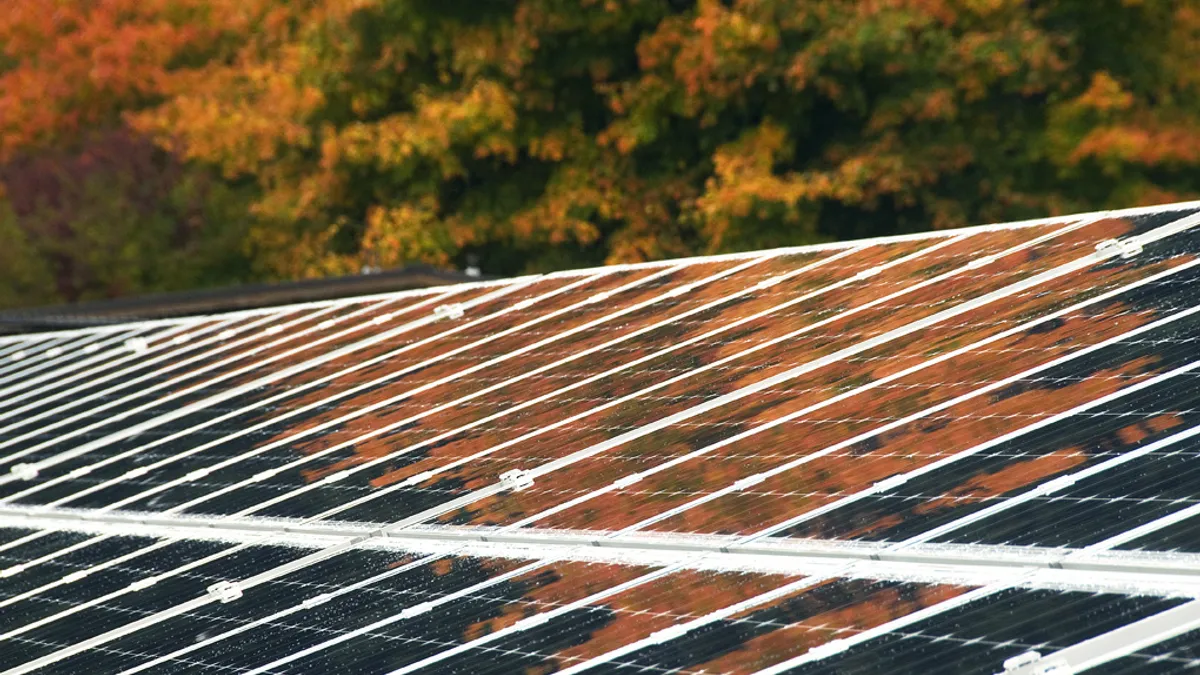Dive Brief:
- The Solar Foundation's "Brighter Future" report, conducted for the U.S. Department of Energy with assistance from the Solar Energy Industries Association, shows over 3,700 solar energy systems on U.S. public and private K-12 schools as of 2014, with an more than 3,000 estimated to have been added between 2008 and 2014, and a total number that's expected to have doubled since then.
- District Administration reports that not only do the systems provide energy savings with little maintenance requirements, but they also provide hands-on science education opportunities for students.
- Schools do, however, face challenges in financing the systems, since their tax-exempt status prevents them from taking advantage of tax credit programs, but bond measures, capital budget expenditures and solar renewable energy certificates have proven popular.
Dive Insight:
The energy savings for school districts resulting from solar installations is nothing to sneeze at: Southern California's Poway Unified School District, for example, installed panels on 16 campuses for an estimated annual savings of $250,000. But with focuses on experiential learning and career and technical education on the rise, the potential educational benefits for students are also worth plenty of consideration.
At a time when the Kentucky Coal Mining Museum is even among those switching to solar, it's hard to deny that renewable energy jobs will soon make up a bigger chunk of the energy economy. Exposing students to growing fields can open their eyes to potential future careers, or at the very least offer real-world examples of applications for material they're learning. Making this case to policymakers while career prep is a hot topic can also help further the cause for funding a solar installation, as well.
Of course, K-12 isn't the only sector of ed getting on board solar power. The University of Massachusetts System, for example, is expected to save millions on energy over the next 20 years via deals on a number of its campuses, including Boston and Amherst.













